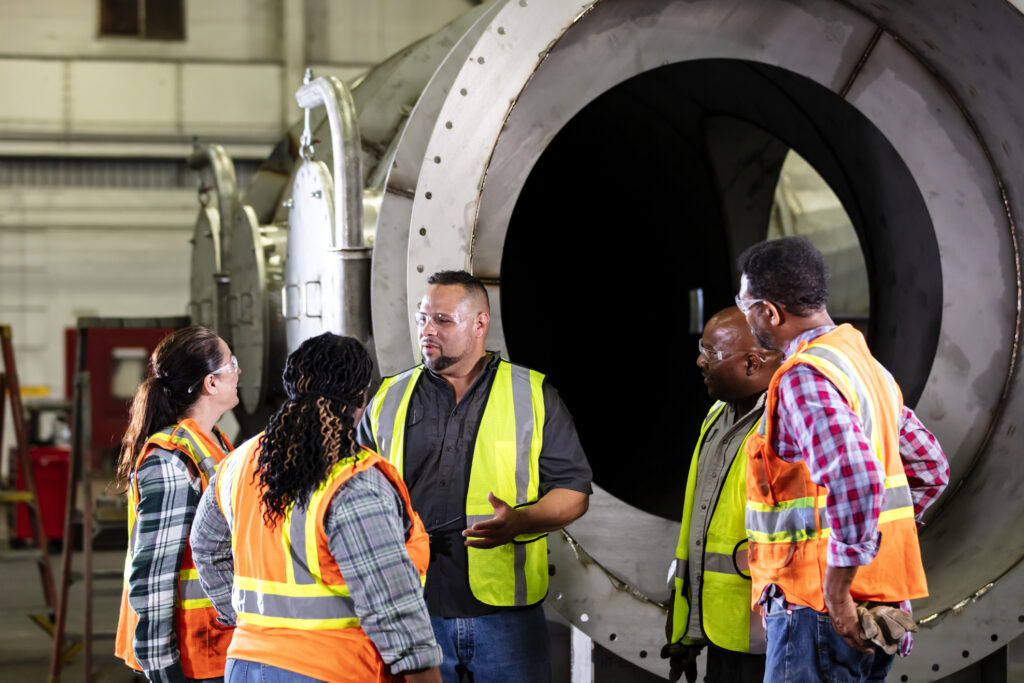
The clean energy and infrastructure sectors are getting a big boost. The Markle Foundation wants to make sure everyone can access its benefits.
Funding from the Infrastructure Investment and Jobs Act of 2021 (IIJA) and the Inflation Reduction Act of 2022 (IRA) can be utilized to create high-quality jobs, especially for those in underrepresented groups, according to a new report from The Markle Foundation.
Markle, an advocacy group that aims to improve labor environments to make them more equitable, argues these two new pieces of industrial policy offer not only the opportunity to revolutionize the infrastructure and clean energy industries, but to increase employment representation from underrepresented communities.
The report notes that potentially millions of new jobs will be created by the two new laws — good jobs, which “tend to pay more than occupations with similar education credential requirements and have higher rates of unionization, a characteristic associated with significant job quality benefits.”
But “women and younger workers are vastly underrepresented” in these types of jobs, “and racial/ ethnic inequality is stark,” according to the report.
While accounting for nearly half of the U.S. workforce, women only represent 18.5% of infrastructure workers, dropping to 3.6% of construction workers in 2019. Black and Latina women, meanwhile, represent less than 0.7% of all construction trade apprentices.
Black and Latina women also have historically been paid at a disproportionate rate in comparison to white men across any sector, and this field is no different. Black and Latina women are concentrated in lower-paying jobs within the infrastructure sector, paid an average of $23,000 less than market average.
But all the new investment from the IIJA and IRA offers an opportunity to recruit more underrepresented groups into these new jobs and begin to create more equitable outcomes, Markle argues.
The report recommends that state Departments of Transportation use this federal funding to enforce job and inclusive workforce standards in contracting decisions, and also to stand up training programs. These investments should be applied in underserved communities to broaden workforce responsibilities.
The report notes:
“Because billions of dollars slated for transportation and clean energy funding is flowing through states and comes with significant flexibilities to invest in workforce goals, states have resources and options to prioritize creating high-quality jobs with this spending and to support broad, inclusive paths to these workforces…
“Importantly, state infrastructure agencies also now have more flexibility to use these funds for workforce investments, which are vital to building a larger and more diverse infrastructure workforce. States oversee numerous systems that touch jobseekers that could be leveraged to build diverse paths to infrastructure jobs. At the same time, state infrastructure agencies can set priorities in their spending to drive job quality and workforce access.”
But it not only states who have the responsibility to make changes for these fast-growing industries. Emphasizing the strong partnership that will be necessary between federal, state, and local agencies to address the exponentially growing demand for U.S. infrastructure workers, Markle suggests utilizing the IRA and IIJA grants to invest in apprenticeship programs, training programs, and readiness programs.
By investing in workers themselves, job quality and production will not only increase, but a safer environment will be created for all workers. With higher wages and company-funded education supplementation, the infrastructure and clean energy sector can continue to grow into the rising field we believe it will be.
“If multifaceted action is taken, this rare level of funding can support millions of good quality jobs that can provide economic security and mobility to many people, including demographic groups that have long been underrepresented in these sectors,” Markle reports.
